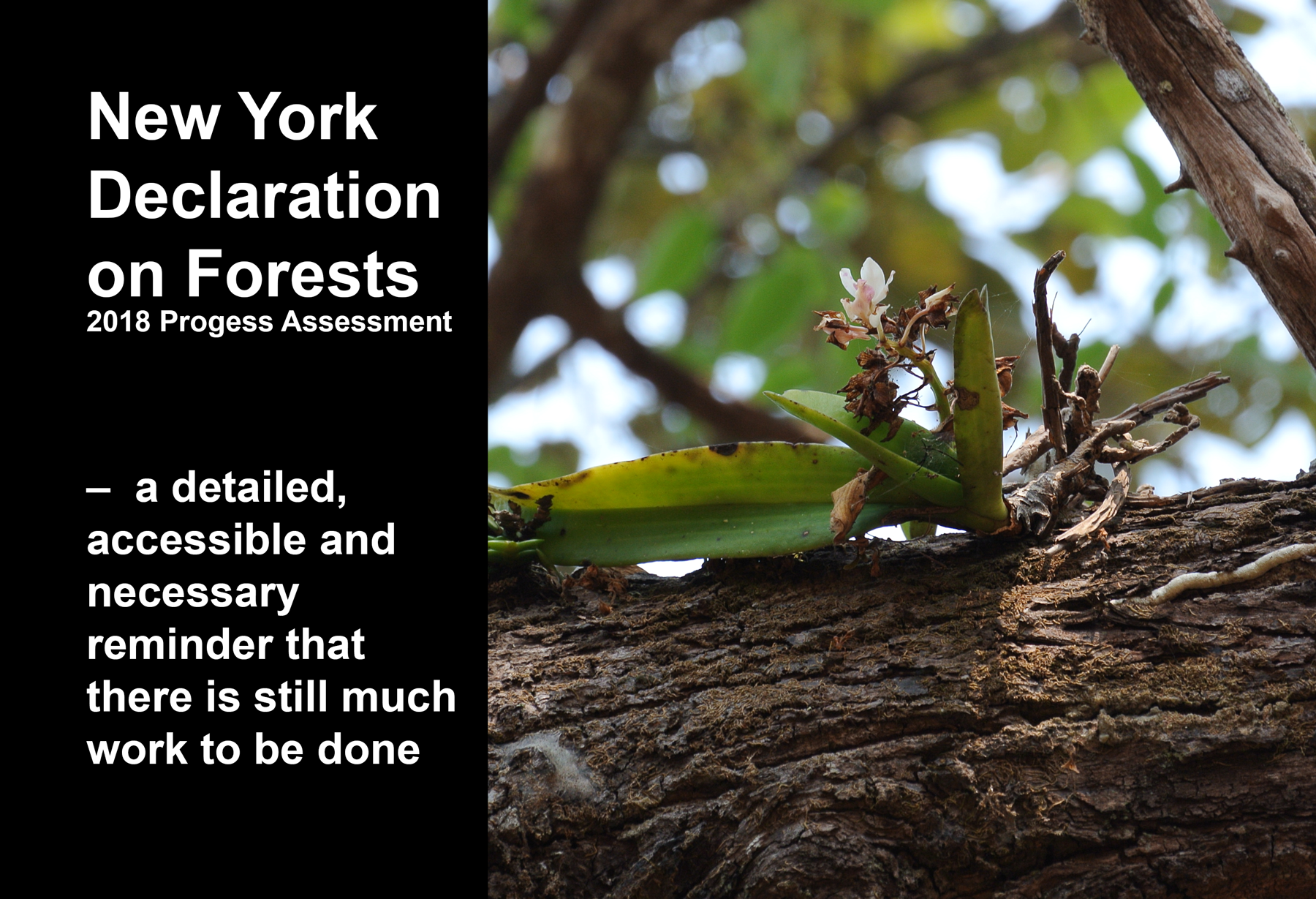Challenges remain for halving natural forest loss by 2020, but restoration of forest landscapes brings hope
According to the 2018 Progress Assessment of the New York Declaration on Forests, the world is not on track to meet global goals to halve natural forest loss globally by 2020 at the current pace. We take a look into this assessment with a focus on the potential of Goal 5 to accelerate the pace of climate mitigation through the forest landscape restoration approach.

Photo: IUCN / Craig Beatty
A growing number of expert organisations and research institutions working on forests and landscapes, including IUCN, participated in the 2018 Progress Assessment on the monumental New York Declaration on Forests. Although encouraging signs exist throughout all Goals, the assessment suggests major gaps and challenges still to be addressed – evidenced by some of the key findings:
- Pledges to stop deforestation have reached significant shares of agricultural commodity markets, yet major gaps remain including data on implementtion of commitments
- Non-agricultural deforestation (like mining) continues to threaten forests as tropical countries double down on resource-based growth
- Results-based payments for REDD+ incentivize forest protection, but progress in demonstrating results and in leveraging funds remains slow
- Forest restoration commitments grow, but measuring implementation remains challenging
- Investments in drivers of deforestation dwarf finance to protect forests, but safeguards are slowly being introduced
Findings like these underscore the profound issues the global community still faces to protect and restore the world’s forest landscapes. For the most part, the findings are a bold call for action.
The assessment of one particular goal, however, provides cause for cautious optimism on transformational changes underway to bring degraded land into restoration. Goal 5 endorses the 2011 Bonn Challenge as an initiative bringing together governments and private actors in a global effort to bring 150 million hectares of deforested and degraded land into restoration by 2020 and 350 million hectares by 2030. And, as reflected in the assessment, governments, nongovernmental organizations (NGOs), and private companies are making progress.
On forest landscape restoration (FLR) through the Bonn Challenge
The 2018 assessment highlights the continued growth in the ambition of governments and private actors to restore degraded and deforested lands, with nearly 13 million hectares in new pledges to the Bonn Challenge since September 2017. This brings total pledges to 168.9 million hectares – meaning that in terms of pledges, the first Bonn Challenge milestone has been surpassed.
Assessing progress under Goal 5 is more than just the numbers. It’s a reflection of all of the efforts for bringing degraded land into restoration to derive diverse and lasting benefits, which requires transformative processes including policy change and strengthened national implementation and monitoring capacities.
- LEARN MORE ABOUT PROGRESS UNDER THE BONN CHALLENGE: Bonn Challenge.org
On the ability to monitor Bonn Challenge implementation progress
But how do we know if restoration is successful? This is an important question and evidence on aggregated progress on restoration on the ground at large scale remains a challenge for the global restoration movement, yet innovative approaches for tracking and reporting progress are underway. The Bonn Challenge Barometer of Progress is a voluntary and flexible framework for tracking progress on public and private institutional, technical and on-the-ground efforts to bring degraded land to restoration. Still in its pilot stage, the Barometer is a promising tool that allows pledgers to close this reporting gap as well as reflecting on barriers being faced. Based on a sample of five jurisdictions, the assessment states that the application of the Barometer found that “over 13 million hectares are under restoration, which represents 41% of their aggregated pledges.With the 2020 target year approaching, countries and organisations are increasing their focus on measuring progress of ongoing efforts.”
Beyond the Barometer’s current reporting scope in tracking progress on FLR, and through Bonn Challenge implementation in a handful of pilot countries, the initial findings resulting from this tracking instrument underline that, “While countries are adopting new policy arrangements and strengthening capacities for bringing degraded forests and land into restoration programs, measuring progress on the implementation of pledges remains a challenge.”
On the potential of FLR to mitigate climate change under the Paris Agreement
Despite the tremendous potential of FLR as a nature-based approach to mitigate climate change, restoration of degraded and undermanaged land isn’t fully realised in national climate commitments such as those under the Paris Agreement, where actionable targets related to restoration and improved land stewardship were only cited in a fraction of the world’s climate commitments. Although three-quarters of Nationally Determined Contributions to fulfil the Paris Agreement contain forest and land-based commitments, less than one-third make quantifiable mitigation and/or adaptation commitments. What this suggests is that there still remains a tremendous amount of potential for countries to harness and invest in FLR when aiming to meet the Paris Agreement – for their own benefit, for the climate, for biodiversity, for the economy and for the world.
The New York Declaration on Forests 2018 Progress Assessment is a detailed, accessible and necessary reminder that there is still much work to be done to protect and restore our forest landscapes.



